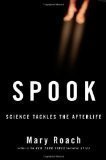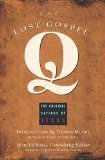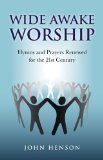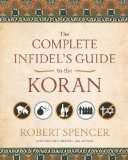Lee Harmon's Blog, page 126
June 14, 2011
Mark 8:6, One Miracle Feeding or Two?
And he commanded the people to sit down on the ground: and he took the seven loaves, and gave thanks, and brake, and gave to his disciples to set before them; and they did set them before the people.
//In my opinion, the story of Jesus feeding the multitude with loaves and fishes has a distinct aura of historicity about it. It is the central "sign" of John's Gospel, and it relates directly to the anticipation of a Messiah who would initiate an age of plenty. It is mentioned in all four gospels ... in fact, in Mark and Matthew, the story is told twice!
Which makes one wonder: Did Jesus feed the multitude twice, or are we reading two different interpretations of the same event? Matthew's Gospel is recognized as an update of Mark with a new theological direction; 90% of the verses in Mark find their way into Matthew, many almost word for word. So, it's probably not significant that Matthew sides with Mark about the event happening twice.
Luke also wrote his gospel with the book of Mark open in front of him. But Luke appears to have had more sources of the Christ story available to him than Matthew, and is less concerned about occasionally disagreeing with Mark. Luke presents only one miracle feeding.
John's Gospel, the most independent of the four, again relates the story only once.
So, then, to determine whether there were one or two miracle feedings, we're left with analyzing Mark. The two events in Mark (one in chapter 6, the other in chapter 8) have varying details: Jesus feeds 5,000 the first time, 4,000 the second time. He uses five loaves and two fishes the first time, and seven loaves and a few fishes the second time. He gathers twelve baskets of leftovers the first time, seven the second time. But the only fundamental differences in the story are the numbers, which surely derive from some theological significance in both stories, though scholars continue to argue about their meanings.
Would it be helpful to discuss the setting surrounding each story? This is where it gets interesting.
1. After both feedings, the meaning is misunderstood.
2. After the first feeding, Jesus crosses the sea to Bethsaida. After the second, he crosses to Dalmanutha, and a few verses later moves on to Bethsaida.
3. After both feedings, Jesus finds himself in a contest with the Pharisees.
4. After the first feeding, Jesus heals a deaf man with spittle. After the second feeding, Jesus heals a blind man with spittle.
What do you think? Are these really two separate events, or two stories Mark has collected of the same event?
//In my opinion, the story of Jesus feeding the multitude with loaves and fishes has a distinct aura of historicity about it. It is the central "sign" of John's Gospel, and it relates directly to the anticipation of a Messiah who would initiate an age of plenty. It is mentioned in all four gospels ... in fact, in Mark and Matthew, the story is told twice!
Which makes one wonder: Did Jesus feed the multitude twice, or are we reading two different interpretations of the same event? Matthew's Gospel is recognized as an update of Mark with a new theological direction; 90% of the verses in Mark find their way into Matthew, many almost word for word. So, it's probably not significant that Matthew sides with Mark about the event happening twice.
Luke also wrote his gospel with the book of Mark open in front of him. But Luke appears to have had more sources of the Christ story available to him than Matthew, and is less concerned about occasionally disagreeing with Mark. Luke presents only one miracle feeding.
John's Gospel, the most independent of the four, again relates the story only once.
So, then, to determine whether there were one or two miracle feedings, we're left with analyzing Mark. The two events in Mark (one in chapter 6, the other in chapter 8) have varying details: Jesus feeds 5,000 the first time, 4,000 the second time. He uses five loaves and two fishes the first time, and seven loaves and a few fishes the second time. He gathers twelve baskets of leftovers the first time, seven the second time. But the only fundamental differences in the story are the numbers, which surely derive from some theological significance in both stories, though scholars continue to argue about their meanings.
Would it be helpful to discuss the setting surrounding each story? This is where it gets interesting.
1. After both feedings, the meaning is misunderstood.
2. After the first feeding, Jesus crosses the sea to Bethsaida. After the second, he crosses to Dalmanutha, and a few verses later moves on to Bethsaida.
3. After both feedings, Jesus finds himself in a contest with the Pharisees.
4. After the first feeding, Jesus heals a deaf man with spittle. After the second feeding, Jesus heals a blind man with spittle.
What do you think? Are these really two separate events, or two stories Mark has collected of the same event?
Published on June 14, 2011 06:51
June 13, 2011
Book review: Spook: Science Tackles the Afterlife
 by Mary Roach
by Mary Roach ★★★★
I loved this book for its entertainment value, but … Science Tackles the Afterlife? I mean, let's get real, this is Mary Roach. Author of Stiff. You're not getting convincing science for your money, you're buying a colorful ride along the surface and around the edge. Mary touches on reincarnation, electromagnetic fields, where the soul resides physically in the body, mediums in lab studies, haunted houses, and near-death experiences.
Did you know the soul weighs three quarters of an ounce? In 1907 Duncan Macdougall measured how much a dead person's body weight abruptly drops at the precise moment, it is assumed, that the soul leaves the body. But pursuing the study became difficult. Who would volunteer to die in Macdougall's lab? Stymied by friction with officials, Macdougall resorted to weighing dogs on a scale he set up in his barn. Owing to the difficulty of finding dogs dying from a disease that rendered them exhausted and motionless, he immobilized and then killed them via injection. Unfortunately, not a single dog showed a drop in weight as it died. Macdougall's conclusion: Dog's don't have souls.
The book's finest quality is its ability to ride the fence, simultaneously teasing you with dubious but honest-to-God studies of the afterlife while bordering on tongue-in-cheek humor. Occasionally, Mary slips up, as in her explanation of the soul's weight. "Theory one: Macdougall was a nutter."
Oh, and the ghostly pictures … I loved them, too.
Can any study or anybody in this book be taken seriously? Oops, gotta go, it's time for Ghost Hunters on the telly.
(click picture to buy on Amazon)

Published on June 13, 2011 06:44
June 12, 2011
Luke 6:20, The Beatitudes in Luke
Looking at his disciples, he said: "Blessed are you who are poor, for yours is the kingdom of God."//Everyone is familiar with the beatitudes in Matthew, that wonderful collection of "blesseds" from the sermon on the Mount. They provide wonderful encouragement for our spiritual needs.
But did you know that Luke preserves a record of the beatitudes as well? Bible scholars sometimes call Luke 6:17-49 the Sermon on the Plain. It's basically the same scene and drawn from the same source as Matthew's Sermon on the Mount. But in Luke's version, the sayings are very down to earth, not meant in a spiritual way at all. In Luke, we're not dealing with the poor in spirit, we're dealing with the poor. We're not dealing with those who hunger after justice, but with those who are truly hungry. It's not about those who are persecuted for righteousness' sake, but simply all who are persecuted. Luke is not about spiritual needs, but about real life. In Luke, Jesus is concerned about those with empty stomachs, the real have-nots, the people who are weeping now.
Luke's Gospel has a different flavor from the beginning. Consider the parable of Lazarus, the poor beggar sitting outside the gates of the rich man. This is not a story about right and wrong, but about haves and have-nots. The have-nots will be rewarded in the age to come, while the haves already have their reward. According to Luke, the only proper use of wealth is to give it to the poor. Where Matthew says, "do not lay up for yourselves treasure on earth," Luke is very specific in relating the same passage: "Sell your possessions and give alms."
Is the Lukan version a more original peek into the true humanitarian ministry of Jesus? Here are Luke's beatitudes:
Blessed are you poor, for yours is the kingdom of God.
Blessed are you who are hungry now, for you shall be satisfied.
Blessed are you who weep now, for you shall laugh.
Blessed are you when people hate and persecute you … for behold, your reward is great in heaven.
But did you know that Luke preserves a record of the beatitudes as well? Bible scholars sometimes call Luke 6:17-49 the Sermon on the Plain. It's basically the same scene and drawn from the same source as Matthew's Sermon on the Mount. But in Luke's version, the sayings are very down to earth, not meant in a spiritual way at all. In Luke, we're not dealing with the poor in spirit, we're dealing with the poor. We're not dealing with those who hunger after justice, but with those who are truly hungry. It's not about those who are persecuted for righteousness' sake, but simply all who are persecuted. Luke is not about spiritual needs, but about real life. In Luke, Jesus is concerned about those with empty stomachs, the real have-nots, the people who are weeping now.
Luke's Gospel has a different flavor from the beginning. Consider the parable of Lazarus, the poor beggar sitting outside the gates of the rich man. This is not a story about right and wrong, but about haves and have-nots. The have-nots will be rewarded in the age to come, while the haves already have their reward. According to Luke, the only proper use of wealth is to give it to the poor. Where Matthew says, "do not lay up for yourselves treasure on earth," Luke is very specific in relating the same passage: "Sell your possessions and give alms."
Is the Lukan version a more original peek into the true humanitarian ministry of Jesus? Here are Luke's beatitudes:
Blessed are you poor, for yours is the kingdom of God.
Blessed are you who are hungry now, for you shall be satisfied.
Blessed are you who weep now, for you shall laugh.
Blessed are you when people hate and persecute you … for behold, your reward is great in heaven.
Published on June 12, 2011 07:40
June 11, 2011
Book review: The Lost Gospel Q
 by Marcus Borg
by Marcus Borg ★★★★
From the introduction by Thomas Moore: "The haunting, inspiring and challenging words of Jesus have now been with us for two thousand years. During all that time they have been used to moralize, instruct, defend and condemn as well as to lead and guide. As scholars have pointed out for over a century, the four Gospels are riddled with the interpretations, biases and agendas of their editors. Amid the clutter of age-old conflicting readings, it often seems difficult to hear an original voice and to take to heart the wisdom of one of the world's greatest teachers."
If you're unfamiliar with Q, here's the idea: Matthew and Luke were written with the book of Mark open in front of them. 50% of Mark is repeated in Luke, and 90% is repeated in Matthew. But there are enough other commonalities between Matthew and Luke to determine that they shared another source, and this source appears to be a "sayings" Gospel. Just the words that Jesus taught. No such book has ever been found, so scholars have named this hypothetical book "Q," meaning "Source."
Written in the 50's only a couple decades after Jesus' death, presumably by his contemporaries, this is as close as we can get to Jesus' original teachings, away from the supernaturalism and moralizing of later Gospels. Q is the sacred "soul" of the Gospel message. Most of its sayings are about how to live "the way" that Jesus taught. Q is the Gospel for Liberal Christians.
Once past the introductory sections, Borg's book provides just one saying per page, sometimes with a bit of historical commentary. This is a short little book that you can read in a couple hours. Or, if you prefer reading one saying per day, the book would provide daily inspiration for three months.
(click picture to buy on Amazon)
Published on June 11, 2011 07:09
June 10, 2011
Revelation 1:1, Revelation's Purpose
The Revelation of Jesus Christ, which God gave unto him, to shew unto his servants things which must shortly come to pass.
//My recent review of The Complete Infidel's Guide to the Koran sparked a discussion of whether there are similar "hate texts" in the New Testament. I couldn't provide any examples except the obvious: the vengeance promised in the book of Revelation. Nothing in the Koran compares to the level of gruesome bloodshed in Revelation, yet more Muslims are incited into a holy war than Christians. How is it that the Koran's hate texts are so much more effective than the Bible's?
Could it be that Revelation's dreams are just too bloody and extraordinary for modern Christians to relate, and the book is largely ignored? Revelation was probably written shortly after the war of 70 A.D., meant as encouragement to Christians under Roman oppression. Judean Christians would have been especially demoralized at the time, having suffered both the loss of family members and dislocation from their homeland and Temple.
Don't worry, says Revelation, Jesus hasn't forgotten you, he is coming back pronto to help you slaughter all the unbelievers and to restore your beloved Jerusalem to even greater grandeur. The irony is that Revelation was never needed; you might even say it failed miserably. Christianity quickly grew into a peaceful religion as Christians instead came to terms with their lot in life.
Yet, even without violent scripture (other than the misunderstood Revelation), Christians have embarked on multiple holy crusades through the centuries. Today, they seem to have outgrown the phase. Islam, too, appears to be slowly outgrowing its current violent phase. This begs the question: Can a religion's holy book influence its believers toward bloodshed, or is violence a matter of environment rather than religion? I'll be the first to admit that religious extremism is a complex problem, and I don't have answers. What do you think?
//My recent review of The Complete Infidel's Guide to the Koran sparked a discussion of whether there are similar "hate texts" in the New Testament. I couldn't provide any examples except the obvious: the vengeance promised in the book of Revelation. Nothing in the Koran compares to the level of gruesome bloodshed in Revelation, yet more Muslims are incited into a holy war than Christians. How is it that the Koran's hate texts are so much more effective than the Bible's?
Could it be that Revelation's dreams are just too bloody and extraordinary for modern Christians to relate, and the book is largely ignored? Revelation was probably written shortly after the war of 70 A.D., meant as encouragement to Christians under Roman oppression. Judean Christians would have been especially demoralized at the time, having suffered both the loss of family members and dislocation from their homeland and Temple.
Don't worry, says Revelation, Jesus hasn't forgotten you, he is coming back pronto to help you slaughter all the unbelievers and to restore your beloved Jerusalem to even greater grandeur. The irony is that Revelation was never needed; you might even say it failed miserably. Christianity quickly grew into a peaceful religion as Christians instead came to terms with their lot in life.
Yet, even without violent scripture (other than the misunderstood Revelation), Christians have embarked on multiple holy crusades through the centuries. Today, they seem to have outgrown the phase. Islam, too, appears to be slowly outgrowing its current violent phase. This begs the question: Can a religion's holy book influence its believers toward bloodshed, or is violence a matter of environment rather than religion? I'll be the first to admit that religious extremism is a complex problem, and I don't have answers. What do you think?
Published on June 10, 2011 08:13
June 9, 2011
Book review: Wide Awake Worship

 by John Henson
by John Henson ★★★★
The subtitle of this book is Hymns and Prayers Renewed for the 21st Century. John Henson is a retired Baptist minister, now residing in Wales, and he put together this collection of what he calls "reset gems and polished buttons." I asked him for a copy, hoping to keep my finger on the pulse of progressive Christian worship worldwide. Not knowing entirely what to expect, I found the collection to be a wonderful indicator of the direction Christianity is moving. I couldn't help feeling uplifted and encouraged as I read.
Henson writes out of concern for the "many Christians who have told me they find it difficult to join in the traditional prayers and hymns of the churches with honesty since the words no longer accurately express their genuine beliefs and commitment. Yet at the same time is felt a sense of loss that is more than just nostalgia for the tools of devotion of former years."
Well, that certainly struck a chord! The result is a compilation of worship prayers and hymns that (with a few welcome exceptions, such as a prayer for deeper love between even same-sex couples) will be appreciated by Christians of all denominations, from the most liberal to the most fundamental. It's a welcome aid to worship for progressive believers and a step toward the dream of uniting Christians of all types.
Here is a favorite of mine, based on Psalm 1:
Splendid are folk who never copyThose who trash another's creed,Thinking only of themselves,Making fun of others' need.
Splendid those who honor GodAnd night and day think on God's love;Their lives are green like leafy plantsThat grow beside the river banks.
Like trees they offer tasty fruit,And shade for those who feel the sun;They guarantee the planet's health,Sustaining life for everyone.
The selfish have such trivial aims,Their cravings wander with the wind;Their lives will fail the test of time,Unlike the lives of those they scorn.
The caring know the help of God,The selfish live and die alone.
(click picture to buy on Amazon)
Published on June 09, 2011 06:28
June 8, 2011
Numbers 31:17-18, Texts of Terror
Now kill all the boys. And kill every woman who has slept with a man, but save for yourselves every girl who has never slept with a man.
//As instructed by a vengeful God, Israel destroyed Midian. The men of Midian were killed in battle, the cities burned, the women and children taken as plunder. But when the officers of the Israelite army returned with their plunder, Moses was displeased; God apparently did not yet feel vindicated. Moses therefore gave instruction to murder the women and children as well, keeping only the young virgins as sex slaves.
While I am no fan of the "texts of terror" within the Bible, they do need to be trotted out every once in a while, and read to those who believe the Bible is superior in moral teaching to, say, the Koran. The Bible, while truly an inspirational book that has spiritually fed millions for millennia, is too human (or inhuman) to touted as perfect. The title of today's blog post comes from feminist theologian Phyllis Trible's book of the same name. It examines four Old Testament women who experienced terrible abuse: Hagar, Tamar, the woman of Judges 19, and the daughter of Jephthah. The primary cause is the social understanding of the day of women as property, and of these four, one story is particularly gruesome, so let's dig into that one. A Levite's unnamed concubine is unfaithful; she leaves him and returns home to her father. The Levite goes after her, and stays in the home of her father. While there, the house is accosted by thugs:
While they were enjoying themselves, some of the wicked men of the city surrounded the house. Pounding on the door, they shouted to the old man who owned the house, "Bring out the man who came to your house so we can have sex with him." The owner of the house went outside and said to them, "No, my friends, don't be so vile. Since this man is my guest, don't do this disgraceful thing. Look, here is my virgin daughter, and his concubine. I will bring them out to you now, and you can use them and do to them whatever you wish. But to this man, don't do such a disgraceful thing." But the men would not listen to him. So the man took his concubine and sent her outside to them, and they raped her and abused her throughout the night, and at dawn they let her go. At daybreak the woman went back to the house where her master was staying, fell down at the door and lay there until daylight. When her master got up in the morning and opened the door of the house and stepped out to continue on his way, there lay his concubine, fallen in the doorway of the house, with her hands on the threshold. He said to her, "Get up; let's go." But there was no answer. Then the man put her on his donkey and set out for home. When he reached home, he took a knife and cut up his concubine, limb by limb, into twelve parts and sent them into all the areas of Israel.
Commentary is unnecessary. OK, I'm done with my obligatory reminder of the occasional inhumane instruction in the Bible. Back to more inspirational and instructive stories tomorrow.
//As instructed by a vengeful God, Israel destroyed Midian. The men of Midian were killed in battle, the cities burned, the women and children taken as plunder. But when the officers of the Israelite army returned with their plunder, Moses was displeased; God apparently did not yet feel vindicated. Moses therefore gave instruction to murder the women and children as well, keeping only the young virgins as sex slaves.
While I am no fan of the "texts of terror" within the Bible, they do need to be trotted out every once in a while, and read to those who believe the Bible is superior in moral teaching to, say, the Koran. The Bible, while truly an inspirational book that has spiritually fed millions for millennia, is too human (or inhuman) to touted as perfect. The title of today's blog post comes from feminist theologian Phyllis Trible's book of the same name. It examines four Old Testament women who experienced terrible abuse: Hagar, Tamar, the woman of Judges 19, and the daughter of Jephthah. The primary cause is the social understanding of the day of women as property, and of these four, one story is particularly gruesome, so let's dig into that one. A Levite's unnamed concubine is unfaithful; she leaves him and returns home to her father. The Levite goes after her, and stays in the home of her father. While there, the house is accosted by thugs:
While they were enjoying themselves, some of the wicked men of the city surrounded the house. Pounding on the door, they shouted to the old man who owned the house, "Bring out the man who came to your house so we can have sex with him." The owner of the house went outside and said to them, "No, my friends, don't be so vile. Since this man is my guest, don't do this disgraceful thing. Look, here is my virgin daughter, and his concubine. I will bring them out to you now, and you can use them and do to them whatever you wish. But to this man, don't do such a disgraceful thing." But the men would not listen to him. So the man took his concubine and sent her outside to them, and they raped her and abused her throughout the night, and at dawn they let her go. At daybreak the woman went back to the house where her master was staying, fell down at the door and lay there until daylight. When her master got up in the morning and opened the door of the house and stepped out to continue on his way, there lay his concubine, fallen in the doorway of the house, with her hands on the threshold. He said to her, "Get up; let's go." But there was no answer. Then the man put her on his donkey and set out for home. When he reached home, he took a knife and cut up his concubine, limb by limb, into twelve parts and sent them into all the areas of Israel.
Commentary is unnecessary. OK, I'm done with my obligatory reminder of the occasional inhumane instruction in the Bible. Back to more inspirational and instructive stories tomorrow.
Published on June 08, 2011 05:59
June 7, 2011
The Complete Infidel's Guide to the Koran
 by Robert Spencer
by Robert Spencer ★★★
I was disappointed in this book. Whether it's true or not hardly seems to matter; I was still disappointed.
Spencer hopes to introduce casual readers to the words of the Koran, and he has nothing good to say about it. He compares it to Mein Kampf. Here are some of the chapter titles:
The Muslims' Worst Enemies: The Koran on the JewsThe Koran on Christians: They're Not So Hot, EitherThe Koran on Women: Crooked and InferiorThe Koran Teaches Nonviolence—Oh, and Violence, Too
Here's the bottom line: If you want to know what's in the Holy Book of Islam, read Spencer. If you want to know what Muslims believe, read Karen Armstrong. Islam is a religion of peace, which—like Christianity—attracts a few extremists. Like Christianity, its holy texts are in places downright abominable. Like Christians, practicing believers generally learn to ignore or spiritualize the ungodly portions of their scriptures.
Spencer says about his work, "You will find nothing in this book about Islamic ritual practices or prayers. This is an Infidel's guide, focusing on where the Koran came from and its specific portions that are—or should be—of concern to Infidels." It is, by Spencer's admission, one-sided, and not reflective of general Muslim practices.
Tomorrow, I'll balance this with a discussion of the Texts of Terror within the Bible, so we can realize how much Christians ignore in their holy book. It might help put things in perspective.
(click picture to buy on Amazon)
Published on June 07, 2011 07:28
June 6, 2011
Revelation 22:15, No Dogs In Heaven
Outside are the dogs, those who practice magic arts, the sexually immoral, the murderers, the idolaters and everyone who loves and practices falsehood.
//I may be committing blogicide with this verse, but here goes.
According to Revelation, the doors of the New Jerusalem are closed to "dogs." And what is a dog? It's a derogatory label for a male prostitute, so named in antiquity because of the coupling method of men with men.
Don't believe me? The New Jerusalem, in Revelation, replaces the Temple. It becomes the new House of God atop Mount Zion. Revelation's teaching comes directly from the Old Testament, in a text responding to Israel's ungodly acceptance of Temple prostitutes:
Deuteronomy 23:18—Thou shalt not bring the hire of a whore, or the price of a dog, into the house of the LORD thy God.
I'll leave you to decide what to make of this.
//I may be committing blogicide with this verse, but here goes.
According to Revelation, the doors of the New Jerusalem are closed to "dogs." And what is a dog? It's a derogatory label for a male prostitute, so named in antiquity because of the coupling method of men with men.
Don't believe me? The New Jerusalem, in Revelation, replaces the Temple. It becomes the new House of God atop Mount Zion. Revelation's teaching comes directly from the Old Testament, in a text responding to Israel's ungodly acceptance of Temple prostitutes:
Deuteronomy 23:18—Thou shalt not bring the hire of a whore, or the price of a dog, into the house of the LORD thy God.
I'll leave you to decide what to make of this.
Published on June 06, 2011 07:02
June 5, 2011
Book review: Woman of Sin
 by Debra Diaz
by Debra Diaz
★★★★★
A while back, I was needing a break from nonfiction, and decided to ask some publishers for fiction to review. I found Borg's book, Helms' book, Deeth's book, Witherington's book (not yet reviewed) … and this one, with the steamy title. Woman of Sin … (cough). Romance? Really?? That would be a first for me! I was assured it had a Christian theme, but I remained unconvinced, and resigned myself to hiding the book under the couch. Now, having read it, I understand the title and find it hilariously appropriate. Great stuff, Diaz!
The story takes place in the years just before and after the crucifixion of Jesus, so the setting is naturally appealing to me. I think it's only fair to point out that the book does have a religious flavor. By book's end, the characters undergo a conversion to Christianity. I hope you don't take this as a spoiler; it needs to be said. This shift of focus will be off-putting to some, but will increase the reading enjoyment of others.
Precisely because of the religious nature of the book, it invites a more rigorous criticism, more than just "great read, well researched, buy it now." It is a great book, and Diaz is a very good fiction writer. She has eloquently captured the life and politics of first-century Jerusalem and the Empire, and has spun a terrific story around one of the Bible's most mysterious characters. But if Diaz had an evangelical purpose in writing, this may be the only five-star review she doesn't appreciate; I found the most "fictional" part of her book to be the assumptions she makes about early Christianity.
By her own concession, Diaz had as a goal to be "historically and Biblically accurate." But when the two clashed, she clearly preferred "Biblical." If her research into all things non-religious weren't so precise, her portrayal of the origins of Christianity wouldn't stick out.
One example will suffice: Immediately after the resurrection, the characters repeatedly refer to Jesus as God. Kudos for Biblical accuracy: In John's Gospel, Thomas, upon feeling the nail prints of the risen Jesus, exclaims, "My Lord and my God!" But in truth, it was likely many years afterward before Jesus would first be considered God, as evidenced by the evolving understanding of God that surfaces when we read the New Testament in chronological order. (John's Gospel was written 60 years or more after Jesus died.) It would be less jarring in a historical novel for Diaz to reflect the very earliest Christian beliefs, rather than the religion that grew later in Jesus' name. Laying a current-day version of Christianity atop an early first-century story made me feel the book was trying to convert me.
Religious content aside, it remains a very entertaining work of fiction. I absolutely loved it and wholeheartedly recommend it! From now on, only pseudo-romance novels will grace my book review blog! :)
(available in electronic form only)
Published on June 05, 2011 06:45



